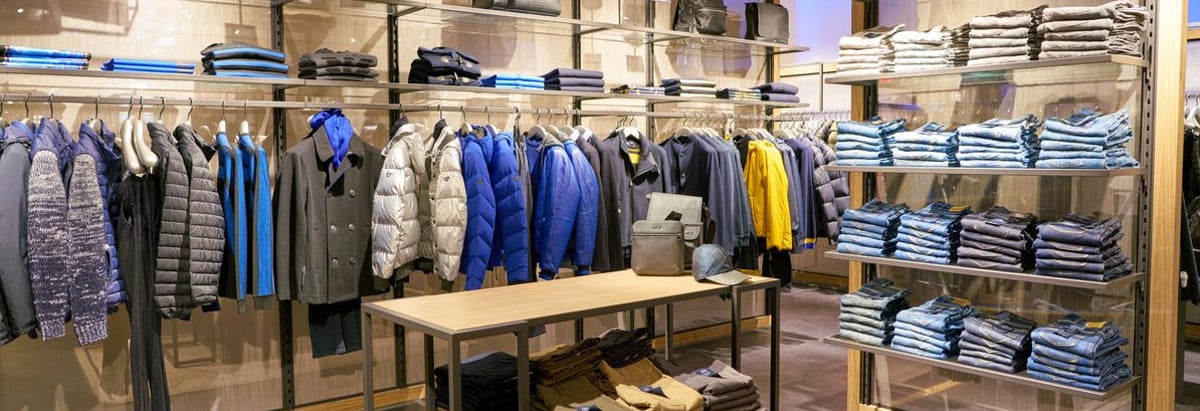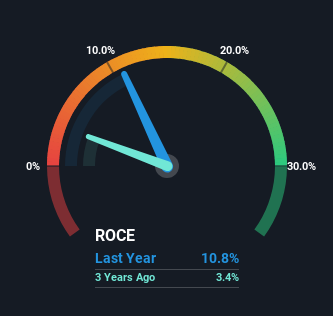- United States
- /
- Specialty Stores
- /
- NYSE:BURL
Burlington Stores (NYSE:BURL) Will Want To Turn Around Its Return Trends

If you're looking for a multi-bagger, there's a few things to keep an eye out for. Firstly, we'll want to see a proven return on capital employed (ROCE) that is increasing, and secondly, an expanding base of capital employed. Basically this means that a company has profitable initiatives that it can continue to reinvest in, which is a trait of a compounding machine. Having said that, from a first glance at Burlington Stores (NYSE:BURL) we aren't jumping out of our chairs at how returns are trending, but let's have a deeper look.
Understanding Return On Capital Employed (ROCE)
Just to clarify if you're unsure, ROCE is a metric for evaluating how much pre-tax income (in percentage terms) a company earns on the capital invested in its business. Analysts use this formula to calculate it for Burlington Stores:
Return on Capital Employed = Earnings Before Interest and Tax (EBIT) ÷ (Total Assets - Current Liabilities)
0.11 = US$607m ÷ (US$7.7b - US$2.1b) (Based on the trailing twelve months to May 2024).
So, Burlington Stores has an ROCE of 11%. That's a relatively normal return on capital, and it's around the 12% generated by the Specialty Retail industry.
See our latest analysis for Burlington Stores

In the above chart we have measured Burlington Stores' prior ROCE against its prior performance, but the future is arguably more important. If you're interested, you can view the analysts predictions in our free analyst report for Burlington Stores .
What Does the ROCE Trend For Burlington Stores Tell Us?
The trend of ROCE doesn't look fantastic because it's fallen from 15% five years ago, while the business's capital employed increased by 50%. That being said, Burlington Stores raised some capital prior to their latest results being released, so that could partly explain the increase in capital employed. The funds raised likely haven't been put to work yet so it's worth watching what happens in the future with Burlington Stores' earnings and if they change as a result from the capital raise.
The Key Takeaway
Even though returns on capital have fallen in the short term, we find it promising that revenue and capital employed have both increased for Burlington Stores. Furthermore the stock has climbed 49% over the last five years, it would appear that investors are upbeat about the future. So should these growth trends continue, we'd be optimistic on the stock going forward.
On a separate note, we've found 2 warning signs for Burlington Stores you'll probably want to know about.
If you want to search for solid companies with great earnings, check out this free list of companies with good balance sheets and impressive returns on equity.
Valuation is complex, but we're here to simplify it.
Discover if Burlington Stores might be undervalued or overvalued with our detailed analysis, featuring fair value estimates, potential risks, dividends, insider trades, and its financial condition.
Access Free AnalysisHave feedback on this article? Concerned about the content? Get in touch with us directly. Alternatively, email editorial-team (at) simplywallst.com.
This article by Simply Wall St is general in nature. We provide commentary based on historical data and analyst forecasts only using an unbiased methodology and our articles are not intended to be financial advice. It does not constitute a recommendation to buy or sell any stock, and does not take account of your objectives, or your financial situation. We aim to bring you long-term focused analysis driven by fundamental data. Note that our analysis may not factor in the latest price-sensitive company announcements or qualitative material. Simply Wall St has no position in any stocks mentioned.
Have feedback on this article? Concerned about the content? Get in touch with us directly. Alternatively, email editorial-team@simplywallst.com
About NYSE:BURL
Burlington Stores
Operates as a retailer of branded merchandise in the United States.
Solid track record with adequate balance sheet.


